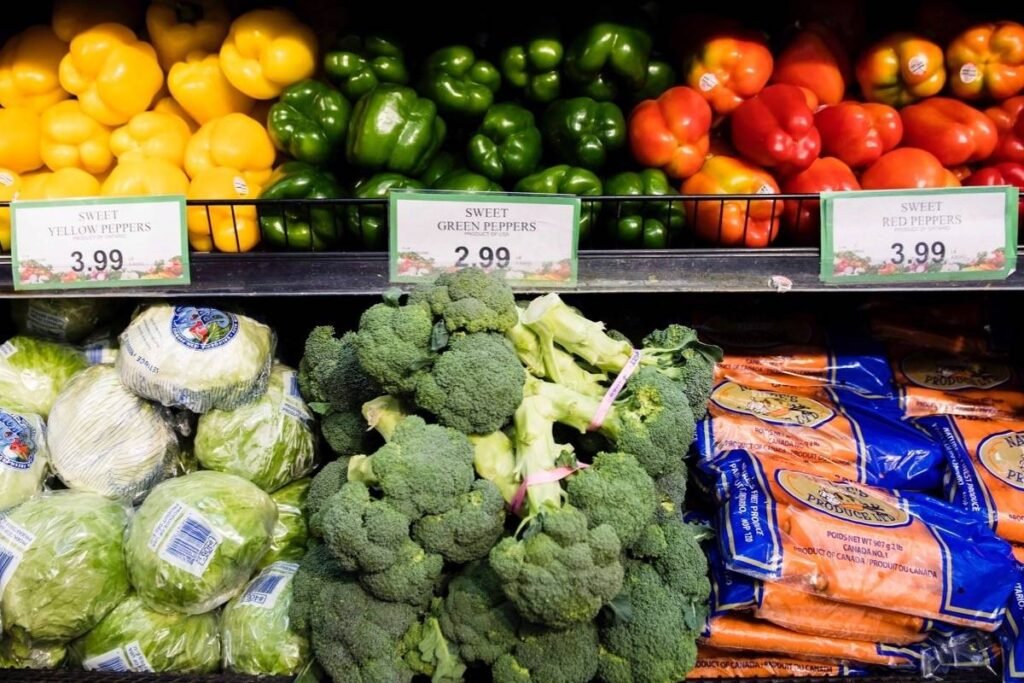Indian cuisine has long since found a place in Canadian households. From fragrant spices to hearty dals, these vibrant dishes bring warmth and tradition to any home. But as a frugal shopper, home cook, or food enthusiast, you may be wondering about the current pricing of Indian food staples in Canada. Is it affordable? How do prices compare across popular grocery stores? And are there ways to save?
This guide unpacks the cost of Indian food in Canada, presents a detailed pricing table for essential ingredients, and provides tips to stretch your food dollars further. Whether you’re an Indian expat missing the taste of home or a local Canadian exploring international flavors, you’ll find everything you need right here.
Table of Contents
How Much Does Indian Food Cost in Canada?
Food prices in Canada have risen in recent years due to inflation, supply chain disruptions, and increased demand. Indian cooking, which relies heavily on lentils, rice, spices, and fresh vegetables, can still fit into most household budgets if you shop smartly.
To give you a clearer idea, I’ve compiled a table of popular Indian food items with their average price ranges and where to find them.

Price Table for Indian Food Staples in Canada
Below is a breakdown of the cost of commonly used Indian ingredients across major Canadian grocery stores.
| Ingredient | Average Price (CAD) | Where to Buy |
|---|---|---|
| Basmati Rice (5 kg) | $20 – $30 | Walmart, Costco, Indian grocery stores |
| Red Lentils (Masoor) | $6 – $10/kg | Loblaws, Bulk Barn, Indian stores |
| Garam Masala (100 g) | $4 – $6 | Superstore, Indian grocery stores |
| Fresh Ginger (per lb) | $3 – $5 | Walmart, No Frills, Local markets |
| Cumin Powder (100 g) | $4 – $7 | Sobeys, Indian grocery stores |
| Roti/Paratha (Pack) | $4 – $6 | Costco, Indian freezer sections |
| Paneer (Block, 400 g) | $8 – $12 | Walmart, Indian grocery stores |
| Ghee (800 g) | $15 – $20 | Costco, Indian grocery stores |
| Fresh Cilantro (bunch) | $1.50 – $2.50 | Local markets, Walmart |
Prices may vary slightly depending on the region and size of the store, but this table provides a solid foundation for budgeting your Indian food shopping.
Tips for Saving on Indian Groceries in Canada
Although Indian food ingredients are already relatively affordable compared to some other cuisines, you can save even more with these savvy shopping tips.
1. Shop at Indian Grocery Stores
Local Indian stores often stock spices, lentils, and rice at much lower prices than larger grocery store chains. Popular chains like Patel Brothers and Apna Bazaar in Canada are great for authentic ingredients at discounted rates.
2. Buy in Bulk
For items like rice, lentils, or spices that have a long shelf life, buying in bulk can significantly reduce your per-unit cost. Wholesale stores like Costco and Bulk Barn are excellent choices for this strategy.
3. Use Coupons and Cashback Apps
Look out for weekly flyers and loyalty programs from stores like Walmart, No Frills, and Sobeys. Additionally, apps like Flipp or Checkout 51 can help you find cashback opportunities or coupons on grocery items.
4. Check the International Aisle at Large Chains
Walmart, Loblaws, and Real Canadian Superstore often carry Indian foodstuffs in their international aisles. These selections aren’t as extensive as Indian stores but can be more convenient for one-stop shopping.
5. Cook Fresh and Freeze Extras
Instead of buying ready-made or pre-packaged meals, cook larger batches of Indian dishes at home and freeze portions for later. This reduces food waste and gets you more bang for your buck.
6. Seasonally Adjust Your Shopping List
Vegetables like okra, eggplant, and green chilies fluctuate in price depending on the season. Buying what’s in season locally can help you save on fresh produce without compromising on flavor.
Health Benefits of Indian Ingredients
Indian dishes are not just cost-effective—they’re also incredibly nutritious. Here are some health benefits of the key ingredients mentioned above to motivate you to cook Indian food at home.
- Lentils (Dal): High in protein, iron, and fiber, making them great for vegetarians.
- Cumin: Supports digestion and has anti-inflammatory properties.
- Turmeric: Known for its active compound curcumin, which has powerful antioxidant effects.
- Fresh Herbs (Cilantro/Mint): Adds a burst of flavor while being low-calorie and nutrient-rich.
- Paneer: A good source of calcium and protein, perfect for a balanced diet.
By incorporating these into your meals, you get both incredible taste and essential nutrition.
FAQ Section
Q1. Are Indian groceries more expensive than Western ingredients in Canada?
Many Indian ingredients, like lentils and rice, are more affordable and last longer than fresh meat or dairy used heavily in Western cooking. Additionally, spices may have a higher upfront cost but can be used across multiple meals, making them great value for money.
Q2. Where can I find fresh Indian produce like okra or curry leaves?
Try Indian grocery stores or local farmers’ markets. Some larger chains, like Walmart or Sobeys, also stock a limited range of Indian vegetables in their produce sections.
Q3. Are pre-packaged Indian meals cheaper than cooking from scratch?
While pre-packaged meals and frozen items can save time, they’re often more expensive in the long run. Cooking from scratch with dried lentils and whole spices is more cost-effective and healthier.
Q4. Can I find gluten-free options for Indian food?
Absolutely! Many Indian dishes are naturally gluten-free. Opt for basmati rice, dal, and dishes cooked without wheat-based flours. Besan (chickpea flour) is a great gluten-free alternative.
Q5. Do stores offer organic Indian food products in Canada?
Yes, stores like Whole Foods, Bulk Barn, and even Indian specialty stores often carry organic options for staples like lentils, rice, and spices.
Discover the Flavors and Savings of Indian Cuisine
Cooking Indian food at home in Canada is an exciting way to explore new flavors while staying on a budget. By shopping smart and utilizing some of the tips shared here, you can create authentic, delicious meals without breaking the bank.
Want to master more recipes or get insider saving tips? Sign up for our newsletter and stay inspired with weekly updates and offers!



5 Comments
Pingback: Discover the Best Indian Food in Canada
Pingback: How to Save Money While Eating Healthy in Canada
Pingback: Food Basics: 7 Easy Ways to Save Money & Eat Better
Pingback: The Ultimate Guide to Frugal Food Shopping in Canada
Pingback: Weekly Food Basics Flyer: Save Big in Canada